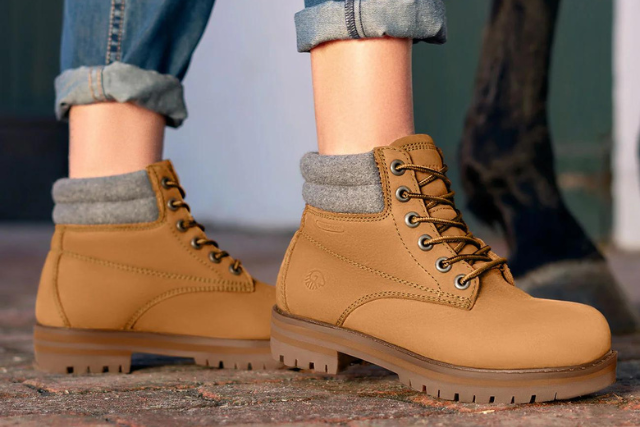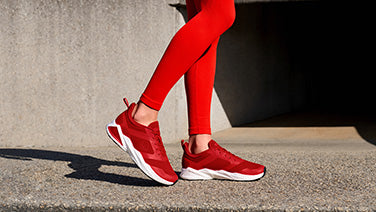

This is how the leather for our Merino Leather Boots is made
Leather jackets, leather shoes, leather seats... We associate all of this with high quality first and foremost. Of course, there are also imitation leather products made from synthetic materials, but many of them cannot compete with real leather - they are often less robust, appear rigid or you can tell right away that they are made of plastic. Real leather is not for everyone - and that's okay. With this article, however, we want to raise awareness about how the leather in our Merino Leather Boots is produced and the ethical standards associated with it.
SUSTAINABLE LEATHER PRODUCTION? HOW DOES IT WORK?
When you think of leather production, the first thing that comes to mind is certainly not sustainability. Many probably think that animals are slaughtered specifically for leather production. While this is still the case today, the fashion industry is now relying more and more on "waste". Animal skins are in fact a by-product of the food industry. If the leather industry did not exist, they would be thrown away. However, there are still producers in the leather industry for whom animals are slaughtered specifically for leather production. At GIESSWEIN, we therefore explicitly rely on leather from food production for our materials.
HOW IS LEATHER MADE?
1. THE PREPARATION
To make leather, we first need animal skins; in most cases, these are bovine skins. The first thing to do is to remove the keratin, i.e. the hair and epidermis. The result is a thick piece of skin that at this stage is still grayish and slightly rubbery to the touch.
2. TANNING
The next step is to tan the hide. This is what we call the process in which raw hides are transformed into leather. The hide is stabilized and preserved by substances called tannins. There are several processes for this: the most common are probably chrome tanning and vegetable tanning. At GIESSWEIN, we focus entirely on vegetable tanning. Nevertheless, we would like to present both processes to you in more detail.
2.1 CHROME TANNING
As chrome tanning is one of the fastest tanning methods, it is also the most used in the industry. This process developed around 1900 to become the primary process. The hide must first be prepared with a "pick". Most often, acids such as sulfuric acid or formic acid are used. This is how the mineral tannins can penetrate the skin. The tannins are then fixed in the leather by the addition of alkaline substances, which is called basification. This is done in a rotating tanning drum and takes about 10 to 15 hours. Chrome tanning makes the leather slightly bluish, and the condition is therefore called wet blue. Chrome tanning also requires a subsequent tanning; in many cases this is a vegetable tanning. But it can also be combined with another tanning.
2.2. VEGETABLE TANNING
A vegetable or vegetal tanning uses vegetable tannins from e.g., leaves, bark, wood, and fruit as tannin. This process can be used either as a re-tanning process or as a tanning process in its own. It is one of the oldest processes and has been practiced for about 5000 years. In the first step, vegetable tanning agents are ground in a tanning mill and mixed with water. In vegetable tanning, an already exhausted tanning solution is often used for pre-tanning to stabilize the hide and speed up the process. Only then is the tanning process carried out with the prepared tan. During the process, the hides are placed in increasingly concentrated boils in what are called tanning pits. The hides are turned repeatedly so that they are evenly soaked in the broth. This process takes considerably longer than chrome tanning and usually lasts from a few weeks to a year.
3. WET FINISHING AND SUBSEQUENT PROCESSING
When the tanning of the hide is completed, the wet finishing process is carried out. The leather is then mechanically drained with folding machines and reduced to an even thickness. The thicker parts are removed with a kind of plane until the surface is of an even thickness. Once the acid residue has been neutralized, the leather is dyed. The final color and dyeing process is related to the tannery. Chrome tanning gives the leather a gray-green color, while vegetable tanning produces a yellow-brown/red-brown leather. Depending on the color desired, more or less pigmented products can be used. In some cases, the leather receives only a transparent layer. Once this step is completed, we move on to the greasing. This step is essential because the greasing product softens the leather, which is essential for the following processing steps.
The leather is then dried. This is done either by hanging, stretching, or using a vacuum dryer. As a rule, a moisture content of about 20% is maintained. This ensures easier further processing. Depending on the type of leather desired, the leather can be further treated, for example to make it waterproof or dirt-repellent. Finally, the different layers of the leather are densified by ironing, embossing, or polishing. From there, the leather can be processed into shoes and other products.
WHY DOES GIESSWEIN USE VEGETABLE TANNING?
Considering the necessary substances, vegetable tanning is more environmentally friendly, as it does not use chemicals, such as toxic chrome. However, vegetable tanning takes longer and may require more energy depending on the process.
In addition to environmental factors, there are, of course, differences between the commodities. Some basic positive characteristics of vegetable tanned leather include:
-
Special breathability and skin tolerance
-
Suitable for people with chrome allergies
-
Ideal texture for further processing
-
Perfect for shoes, belts, handbags, ...
-
Retains its shape and ages attractively over time
-
Scratches can be easily polished out with a leather care product
It is precisely because of these wonderful properties that we at GIESSWEIN rely on vegetable-tanned leather from LWG (Leather Working Group) certified production.
GIESSWEIN MERINO LEATHER BOOTS
Our leather boots combine high-quality leather with our proven merino comfort. The nubuck leather convinces with its stylish, velvety sheen and durable robustness. Thanks to a special manufacturing process, the leather is waterproof and thus becomes a fashionable all-rounder for fall and winter. A 360° lining made of fine merino wool ensures cozy comfort with temperature and moisture regulating properties. So, your feet are always at a pleasant temperature, whether you're taking a sunny walk in autumn or walking through muddy streets in winter. The natural rubber sole with EVA coating ensures optimal grip, even in extreme weather conditions with slippery ground. The boots are the ideal companion for the colder seasons. You too can be convinced by our stylish and functional leather boots.

What are you waiting for? Get yourself a pair of Merino Leather Boots in the color of your choice and share your winter style with us via @giesswein_ mit #giesswein on Instagram.






















